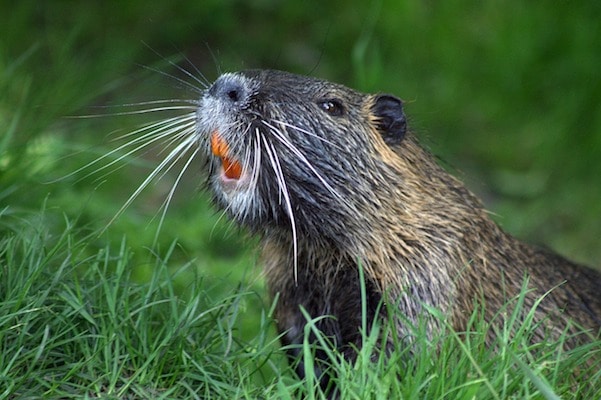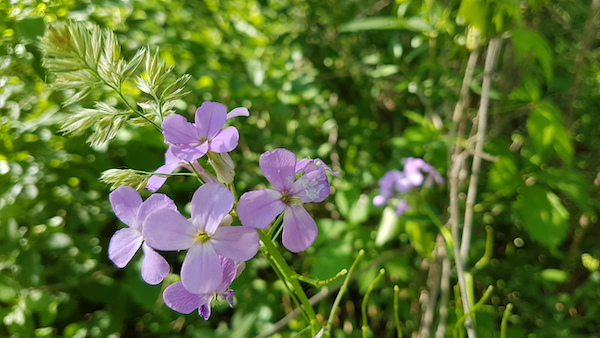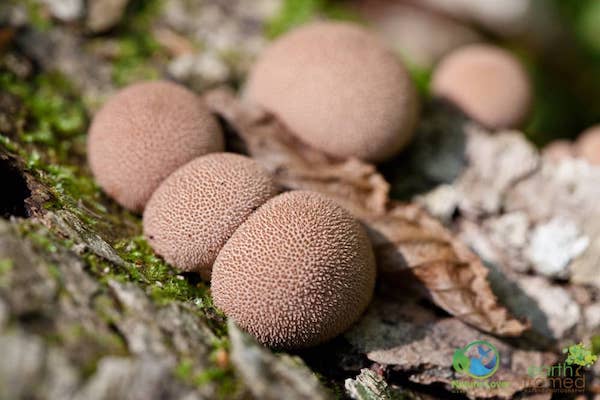Castor canadensis is the scientific name for beavers. There are only two species of beaver in the world: the North American Beaver and the Eurasian Beaver.
The North American beaver can be found throughout most of North America except in the far north, the island of Newfoundland, the Florida Peninsula and the Florida Keys. At almost 32 kilograms and over a metre in length, the beaver is the largest rodent on the continent. There is only one larger rodent in the world and that is the South American capybara.
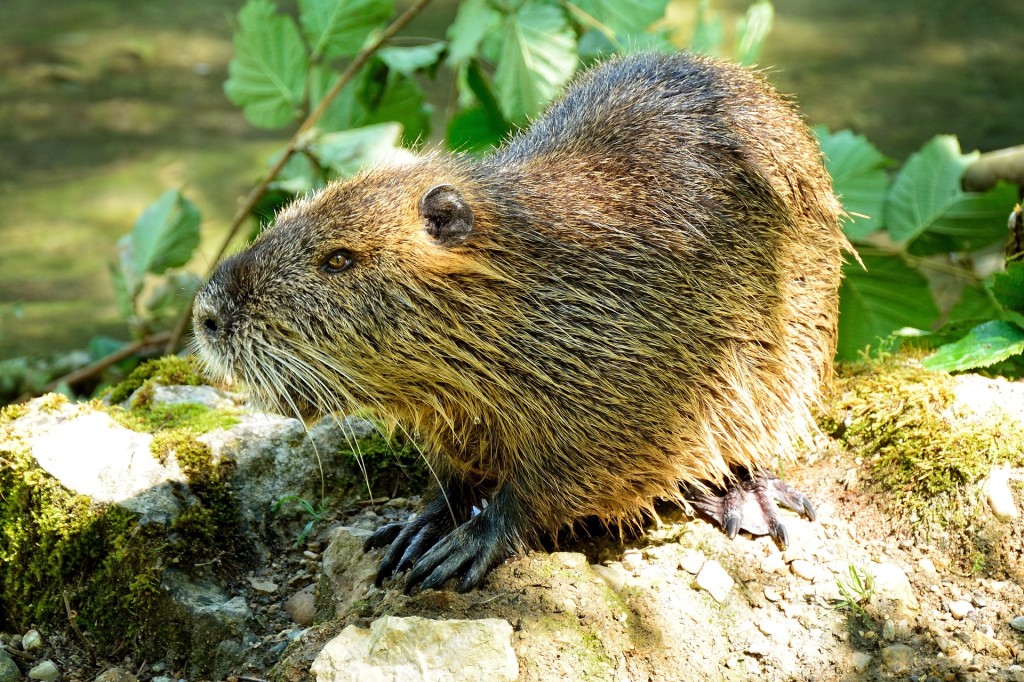
American Beaver
Beavers are dark brown and covered in a thick, waterproof fur. They have buck teeth which stick out in front of their lips so that they can chew wood underwater without getting water in their mouths. Their teeth never stop growing and contain iron compounds which strengthen them for cutting down trees and chewing back for food. Their teeth are even self sharpening. They have a large, flat tail that is shaped like a paddle and is used as a rudder for steering. The tail is also covered in scales which helps with balance. Beavers are excellent swimmers and were designed to work underwater. Their ears and eyes have valves that close and a clear layer covers their eyes while they are swimming to protect them from debris and their back feet are webbed.
Wild beavers can live to be about 24 years old.
Habitat, Behaviour and Diet
Beavers are found mostly in forested areas and must live where there is water that is deep enough so that it won’t freeze to the bottom during the winter. Usually, beavers will dam a river or stream to create the perfect pond to build their lodge in. The lodge is a dome-like structure made from branches and mud and it is built away from the shore. Each dwelling can accommodate an extended family that may include young kits and yearlings from the previous spring. For safety from predators, the entrance to their lodge is submerged.
Beavers are herbivores and will eat almost any deciduous tree or shrub but they prefer trembling aspen, poplar, willow and birch. In the summer they will also eat grasses, herbs, leaves of woody plants, cattails and other aquatic plants. They are most active during dusk and dawn, while most of the daytime hours are spent resting in the lodge. Spending most of their time logging in order to build and maintain their lodge and food stocks, the average beaver will cut down approximately 216 trees a year.
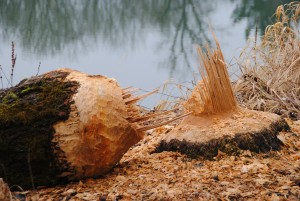
Tree cut down by a beaver.
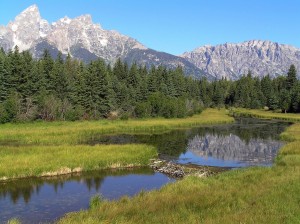
Beaver dam built along river.

Beaver lodge in the middle of a beaver pond.
Reproduction
The monogamous beaver pair mate in the winter time, usually January or February, and the kits are born anywhere between April and June. In the spring, both parents take part in raising their offspring. Once the kits are 2 years old, they will often build their own lodges in the area and then mate in their second winter. A group of beavers is called a colony.
Threats
Beavers were once commercially hunted for their fur, and for their glands (which were used for medicine and perfumes) which contributed to their previous decline in numbers. Nowadays their principal threats are habitat loss and degradation. With the loss of riparian forests due to extensive grazing and agricultural use, as well as the human effect on water sources, beavers are finding it more and more difficult to create and maintain their habitat.
 Beaver Facts:
Beaver Facts:
[two_third_last]
[/two_third_last]
Sources:
“Animal Facts.” Beaver Facts Sheet. N.p., n.d. Web. 23 Oct. 2015.
“Beaver.” Canadian Wildlife Federation:. N.p., n.d. Web. 23 Oct. 2015.
“North American Beaver”. [Online]. Natural History Notebooks. Canadian Museum of Nature.
Last updated 2015-04-28. (Web site consulted 2015-10-23).


